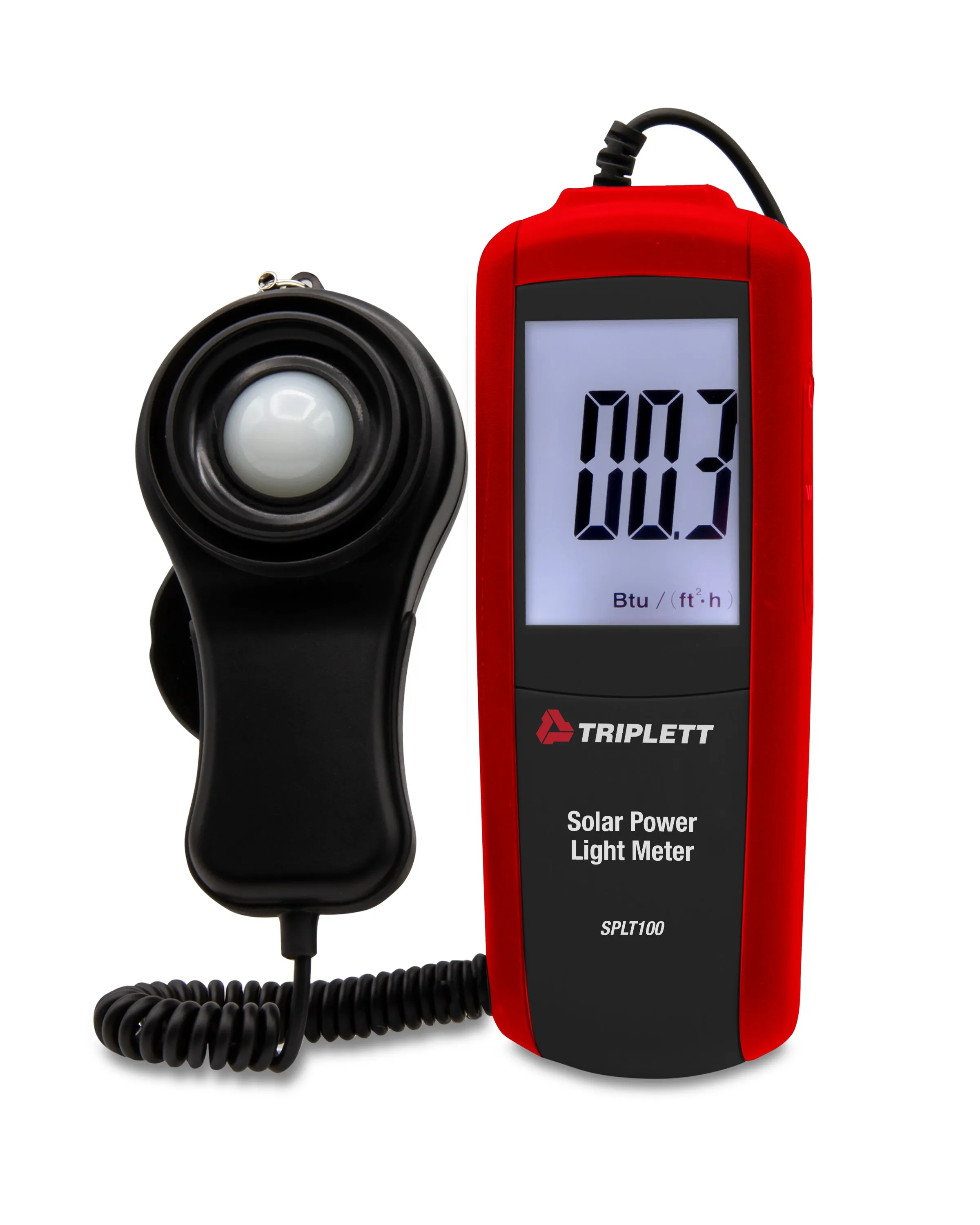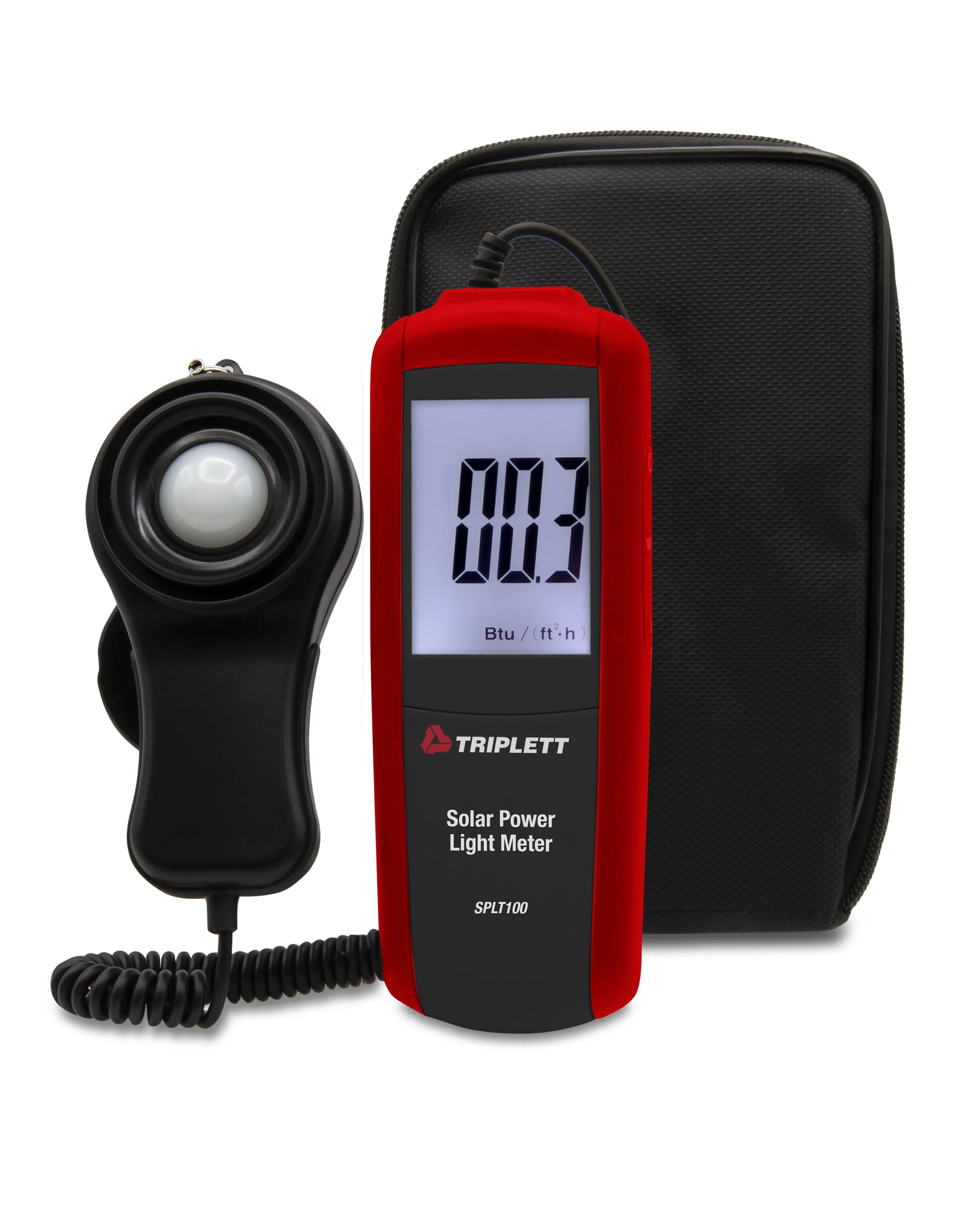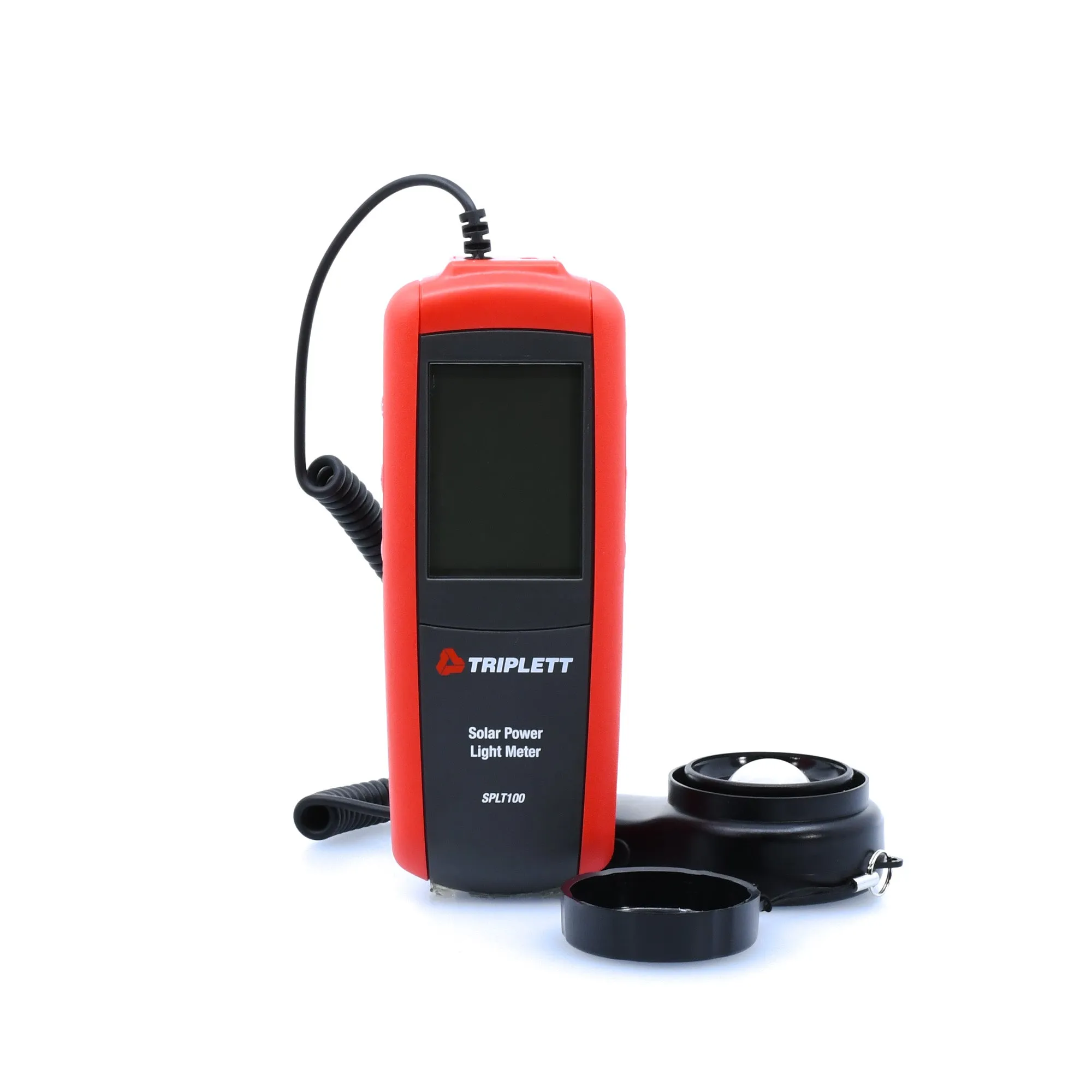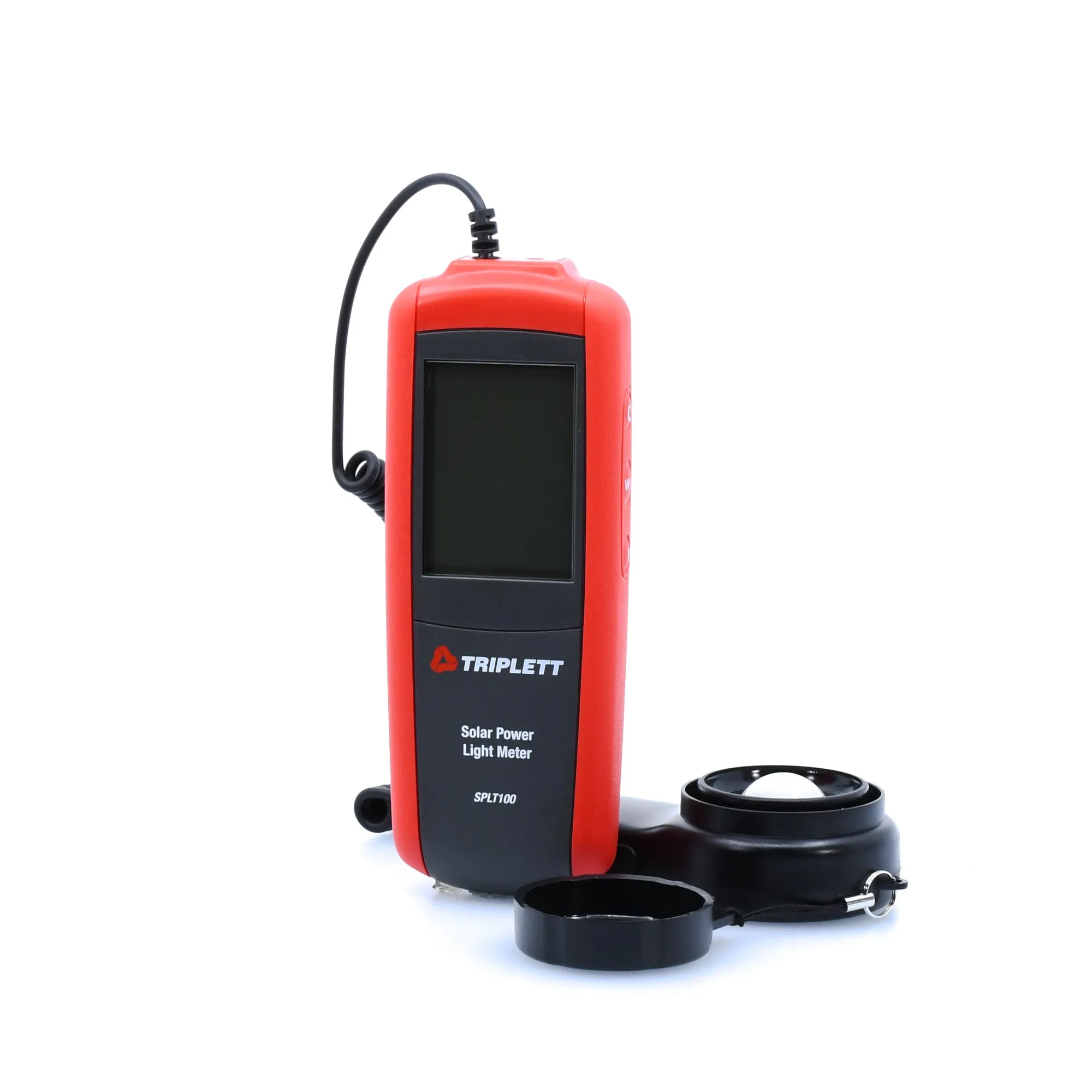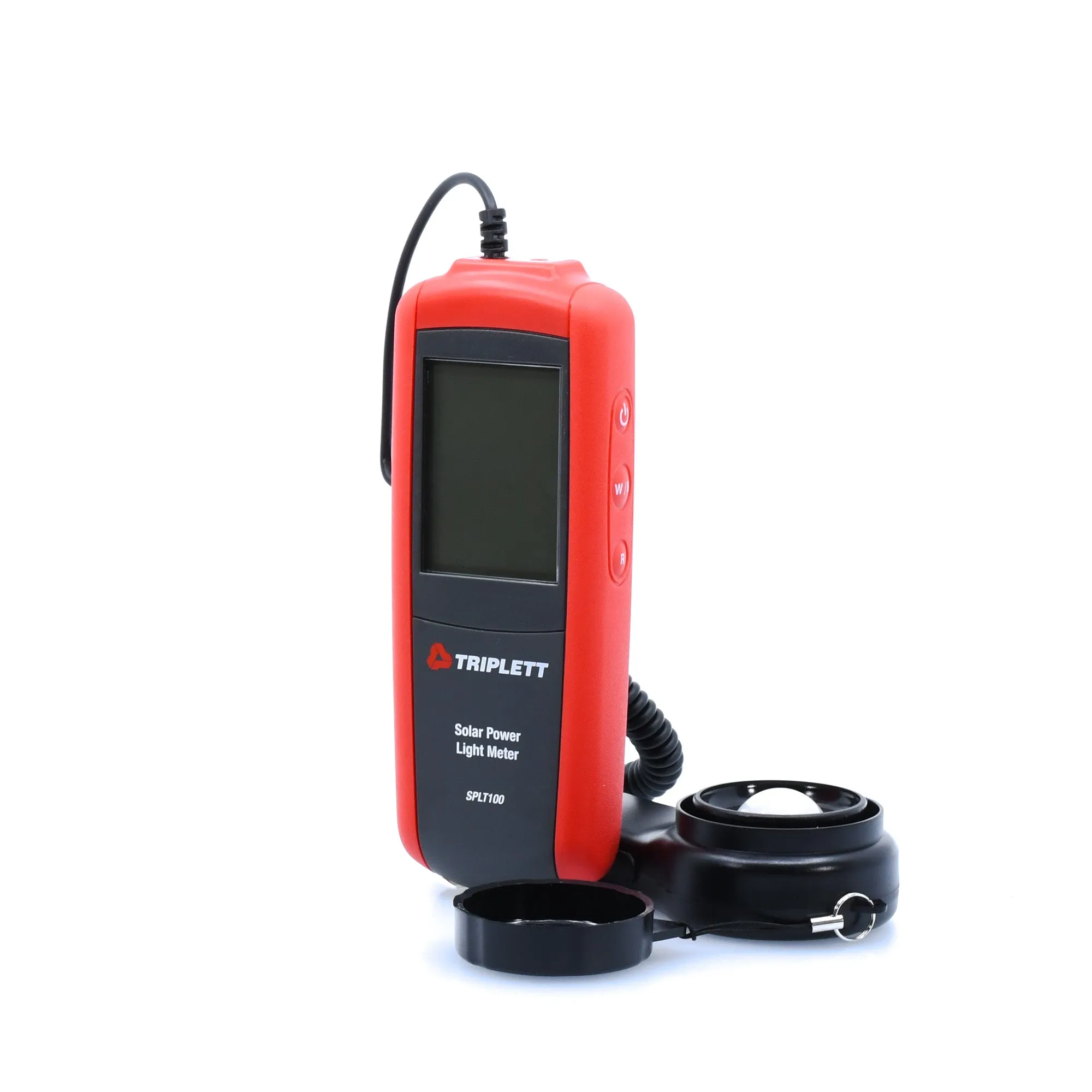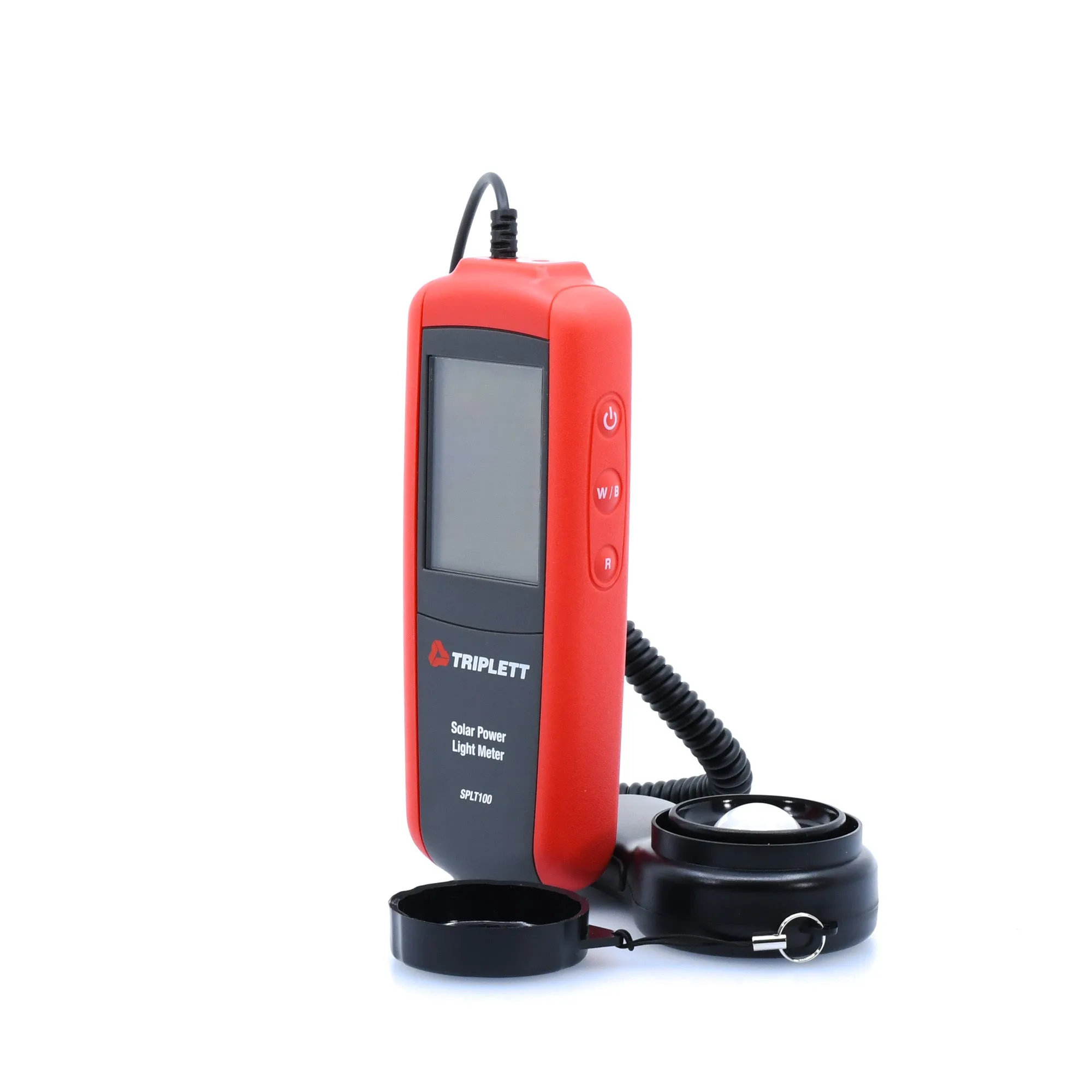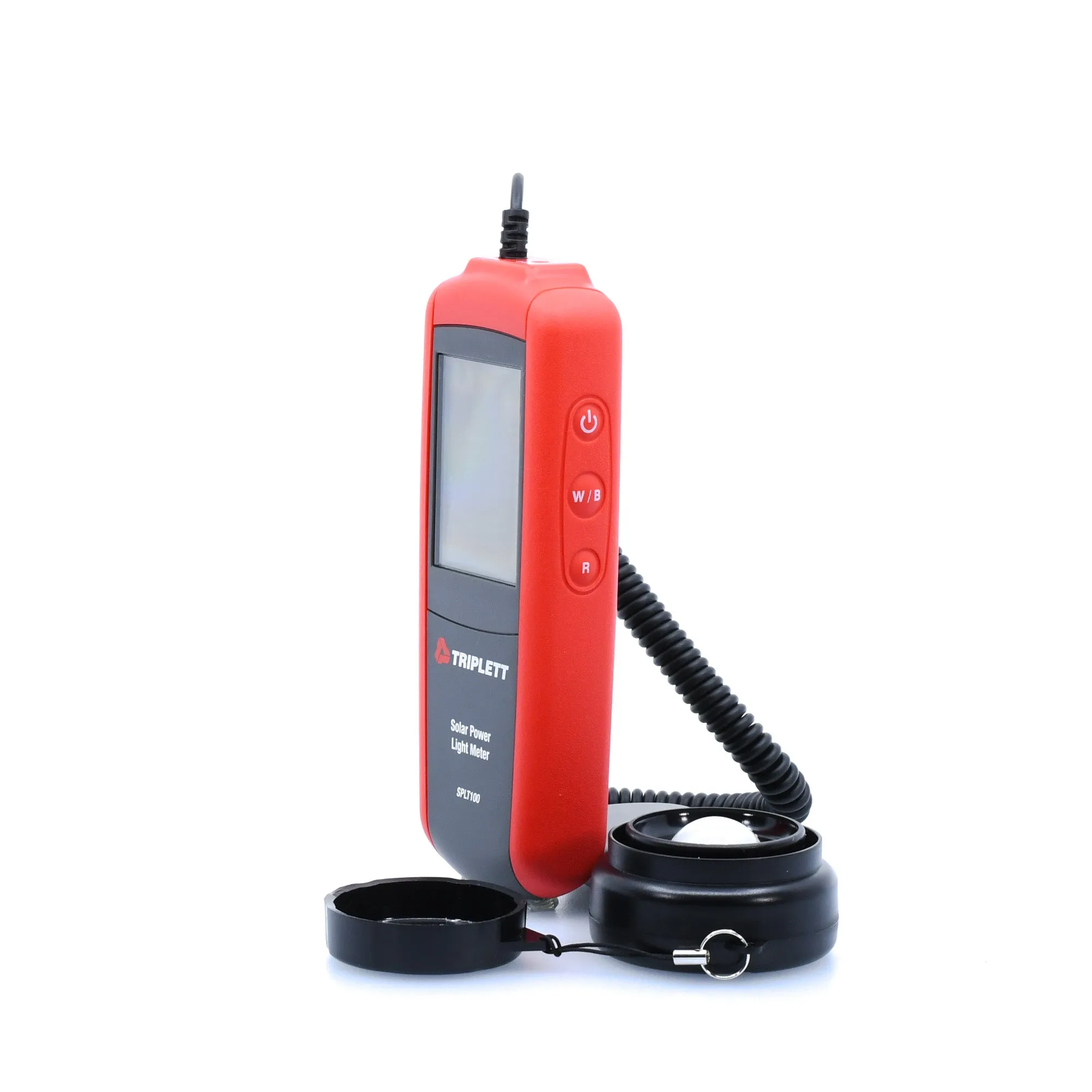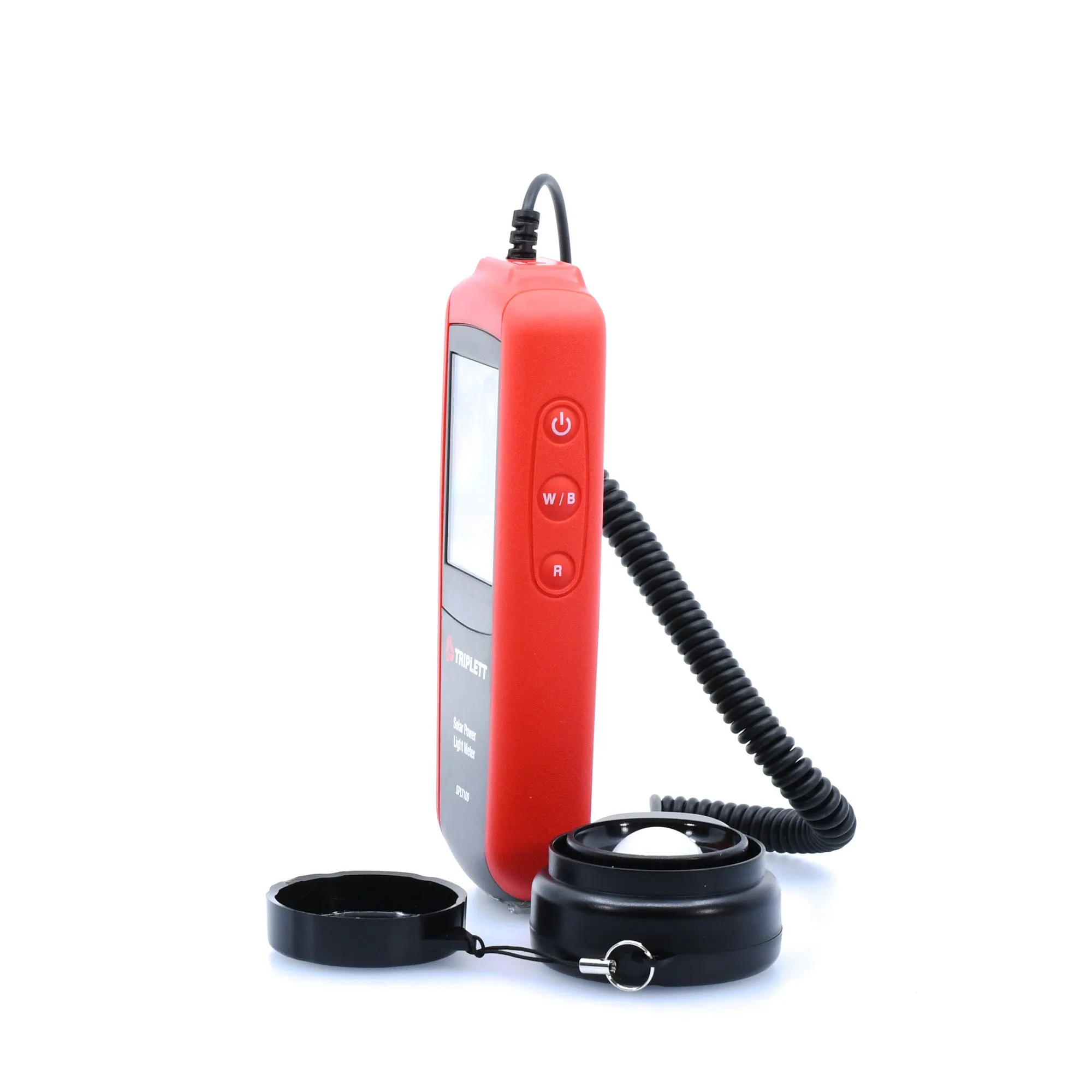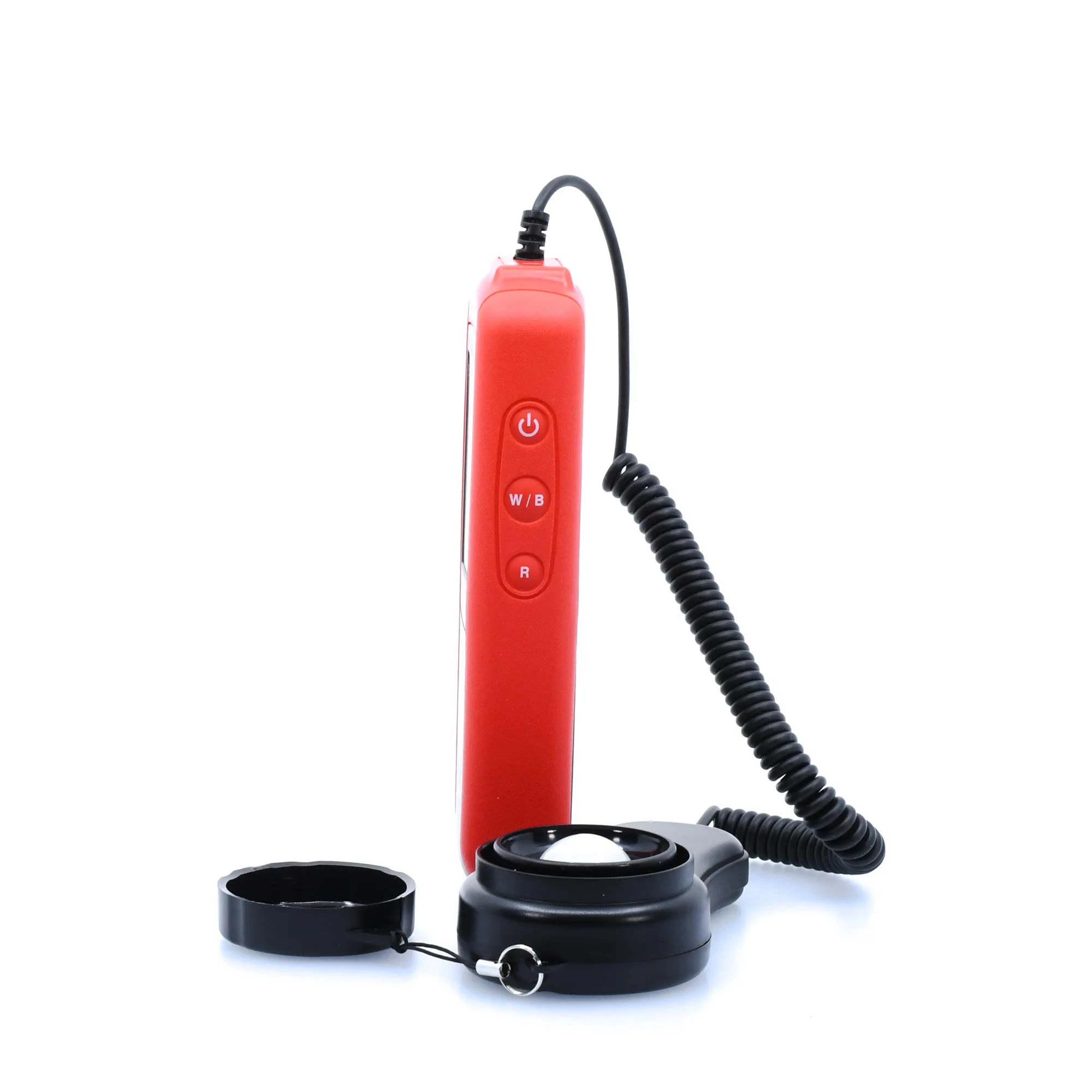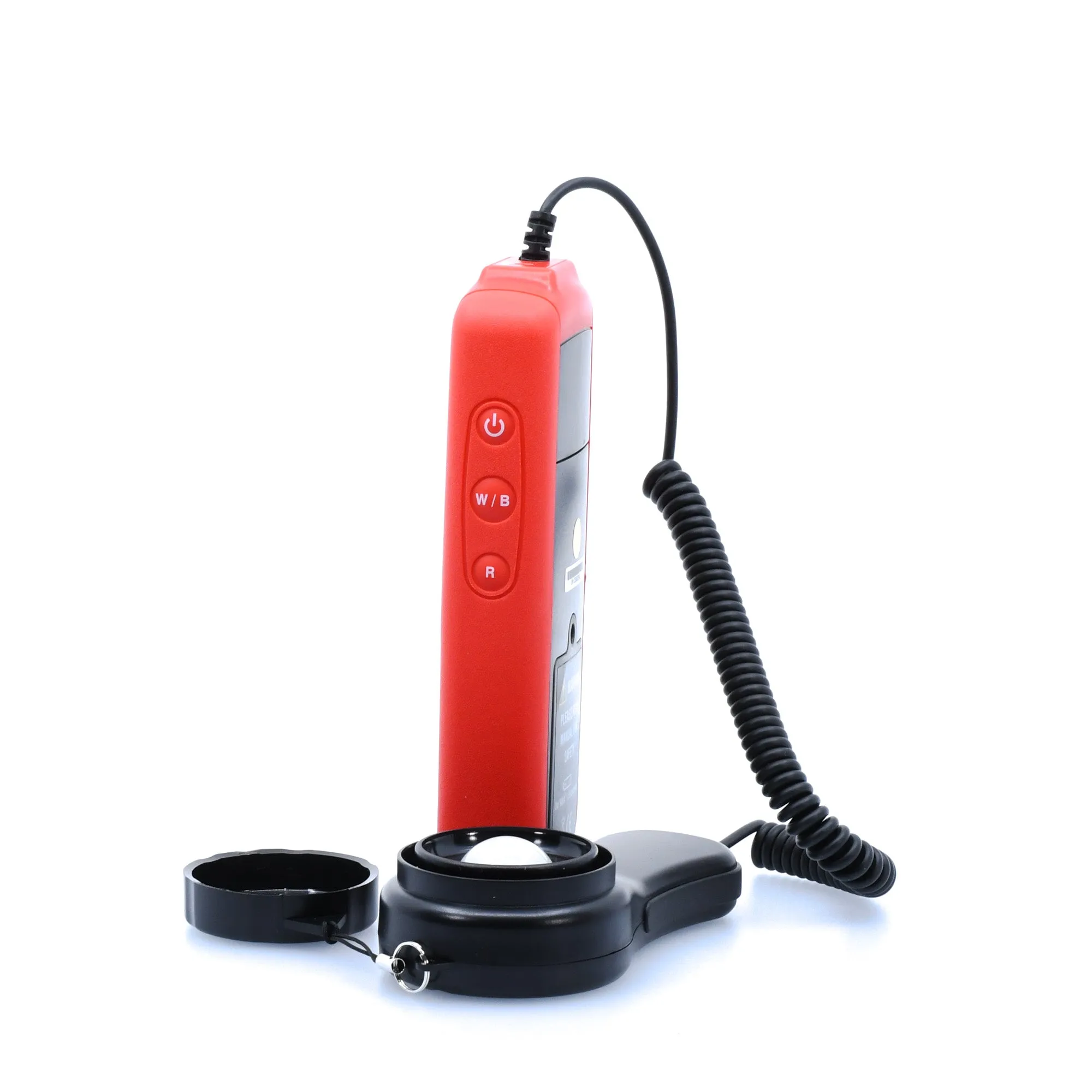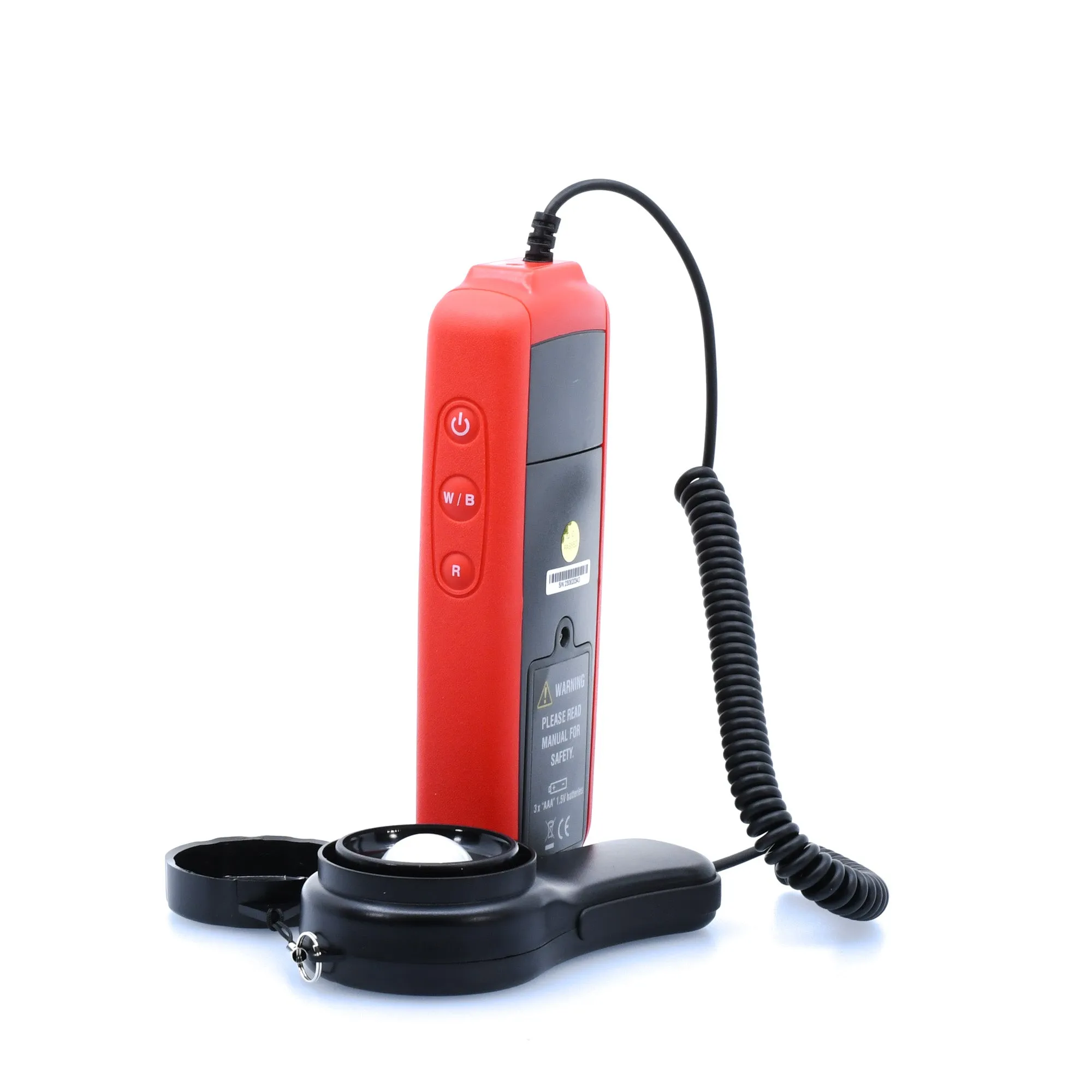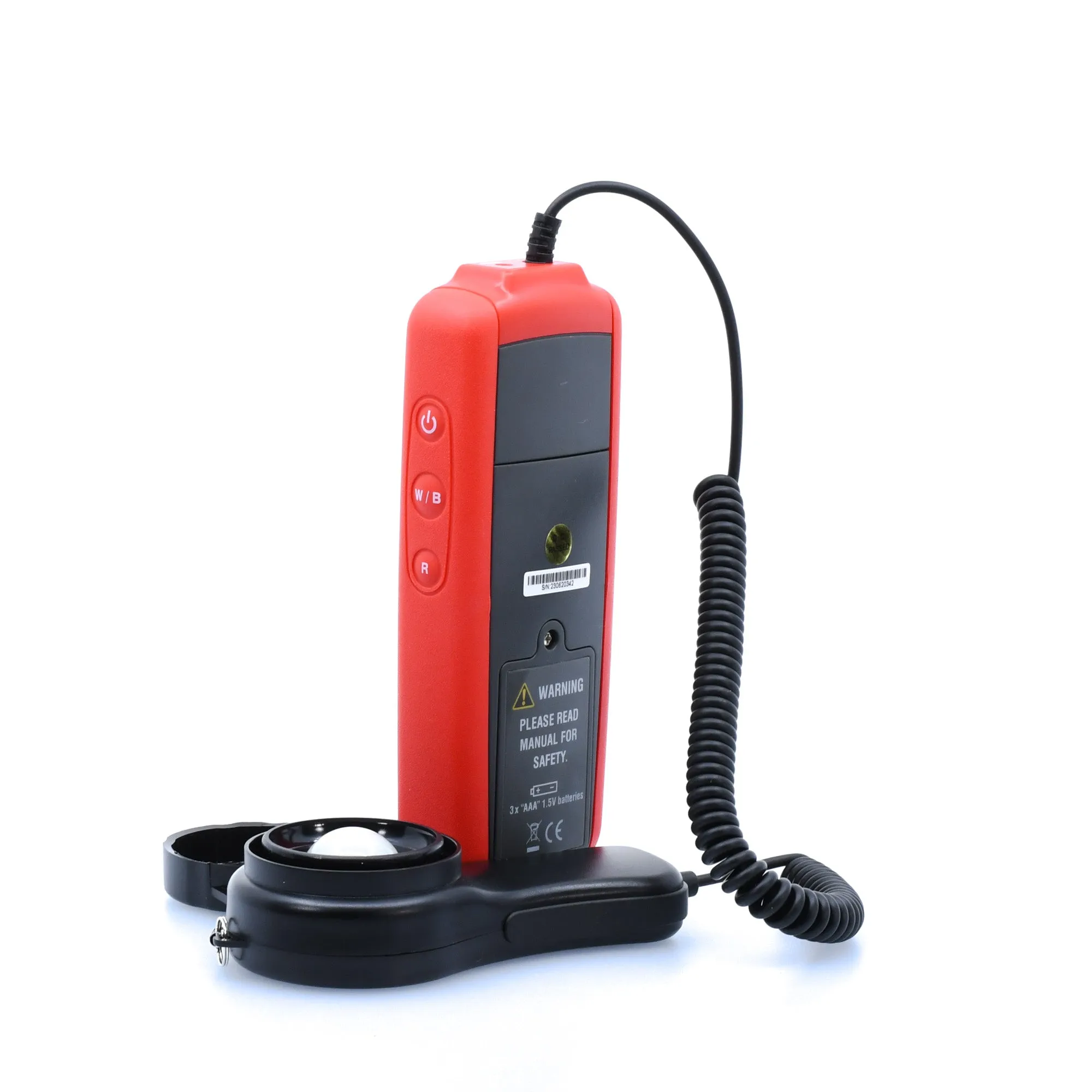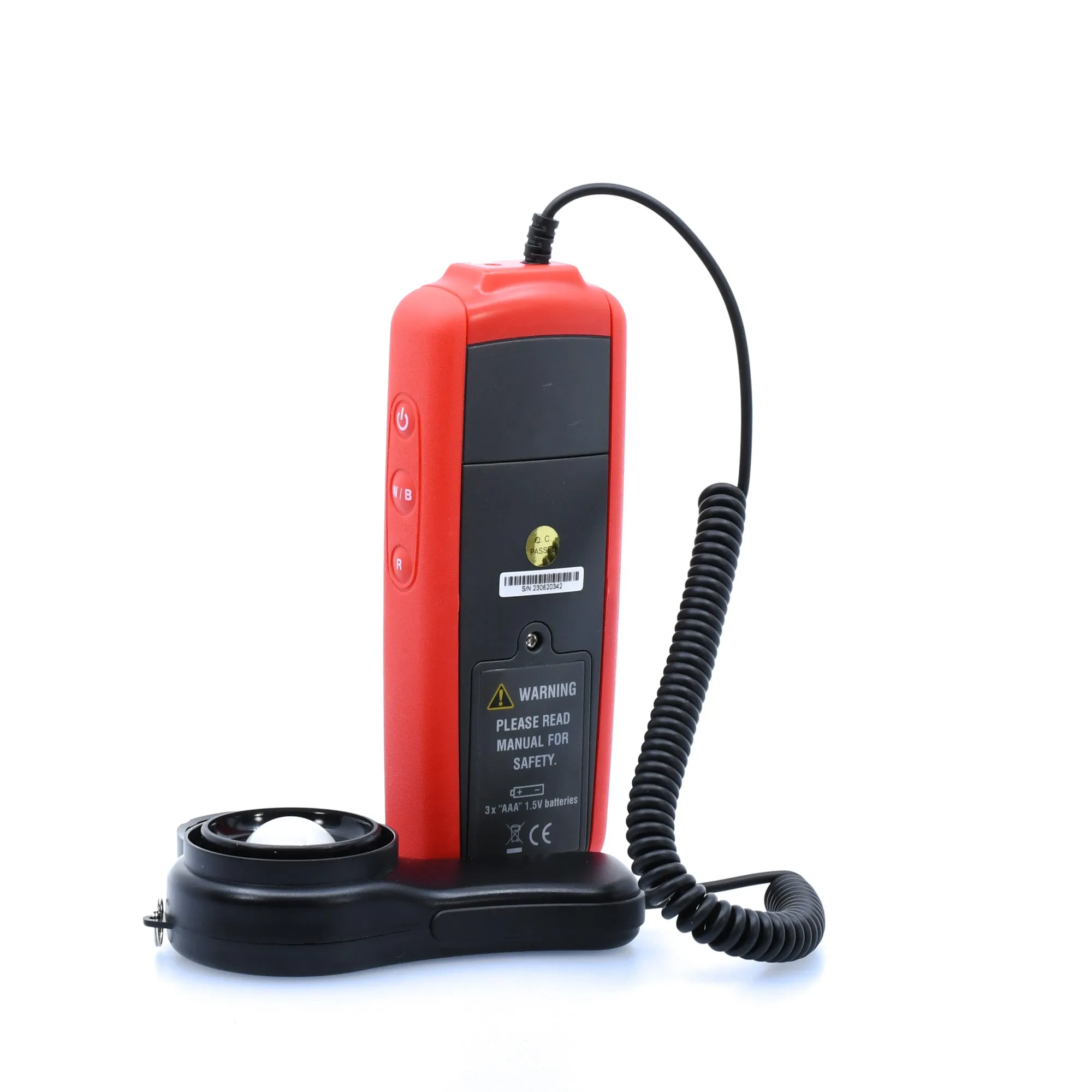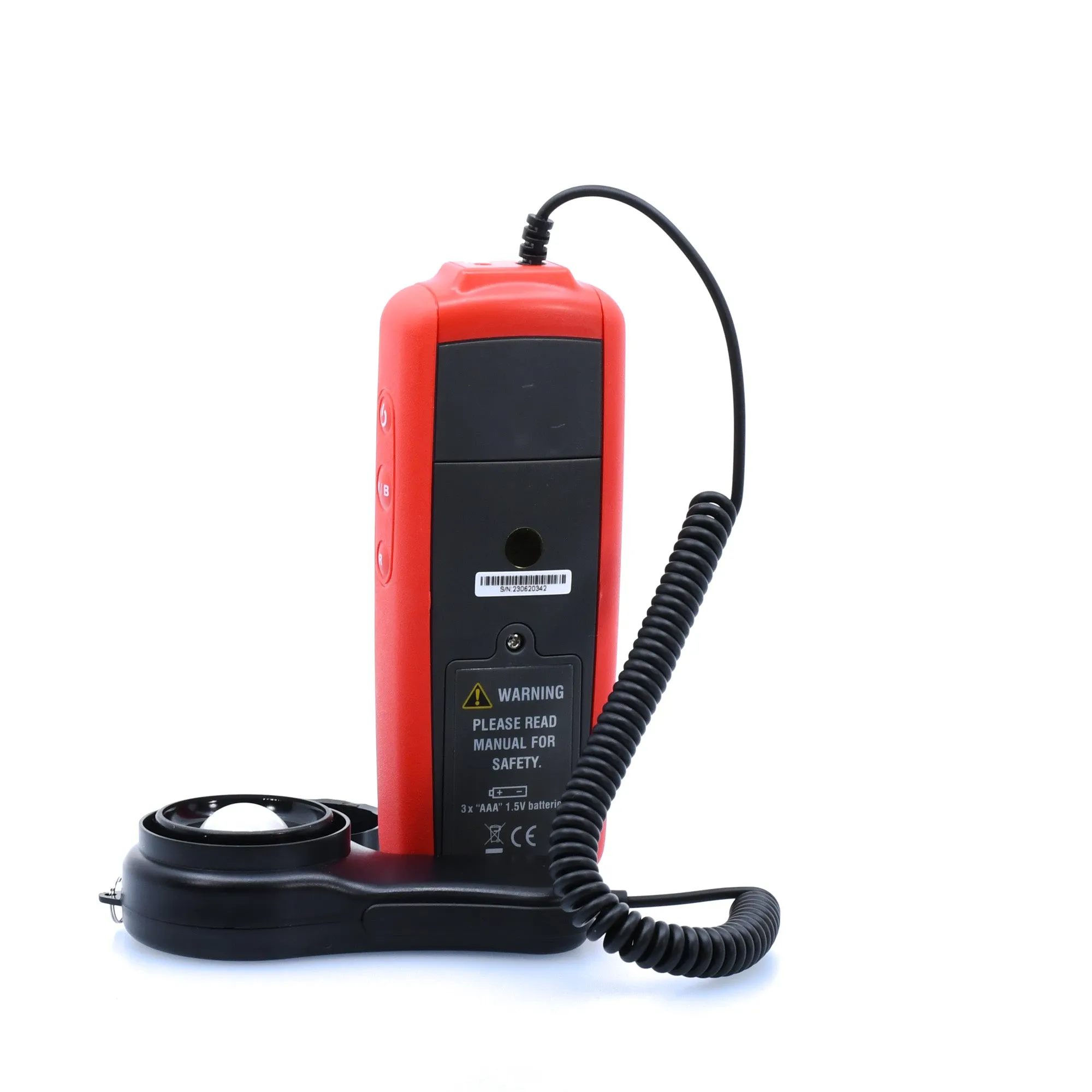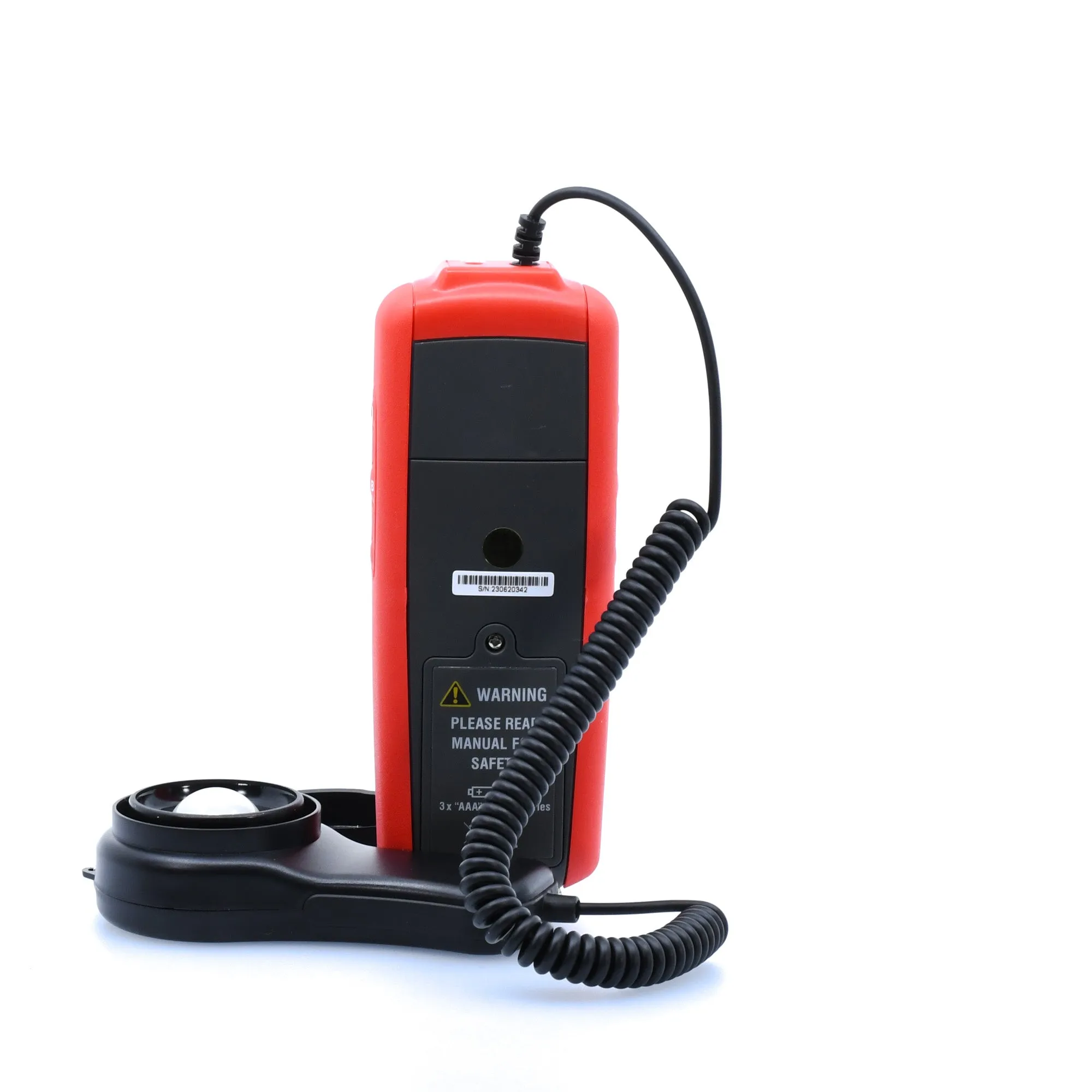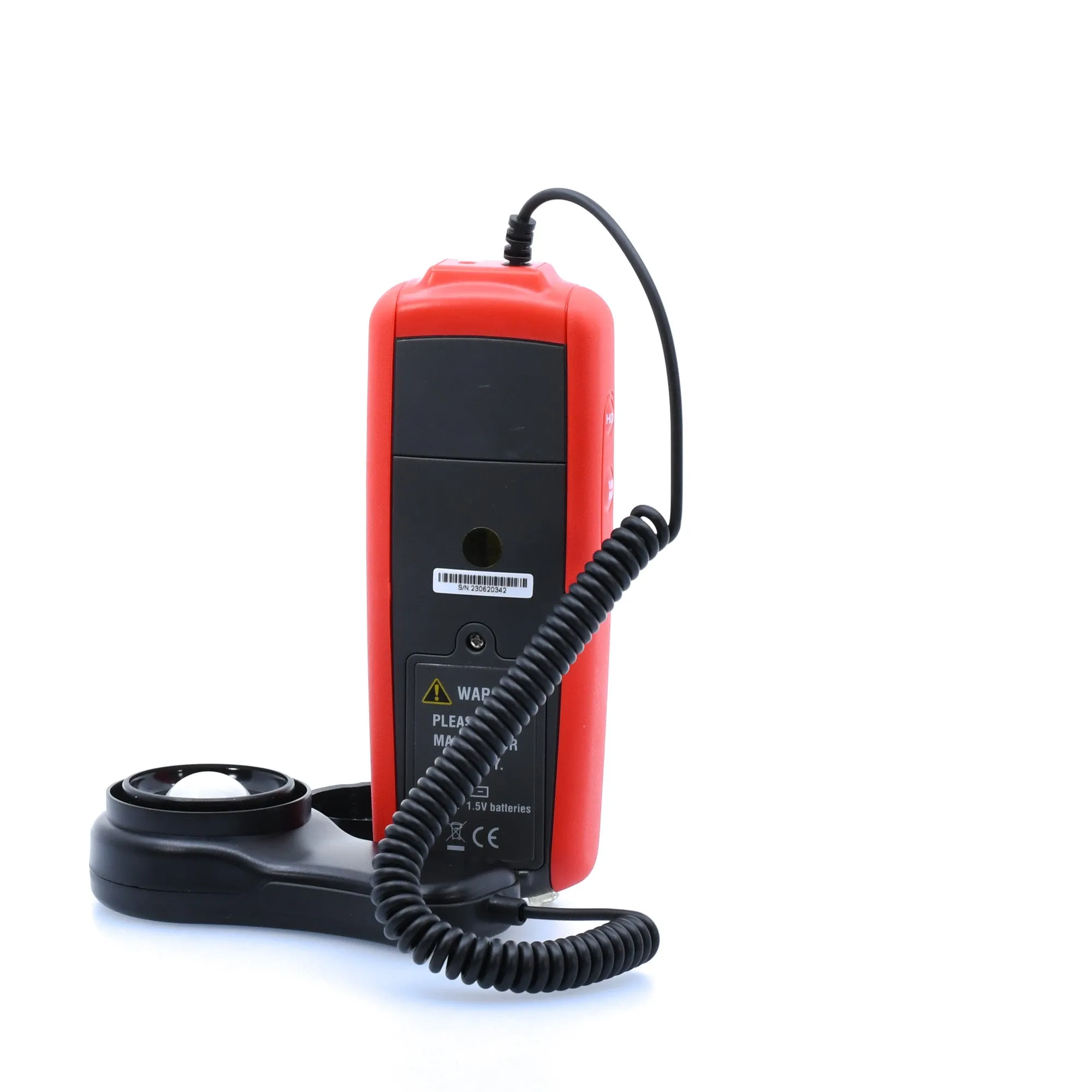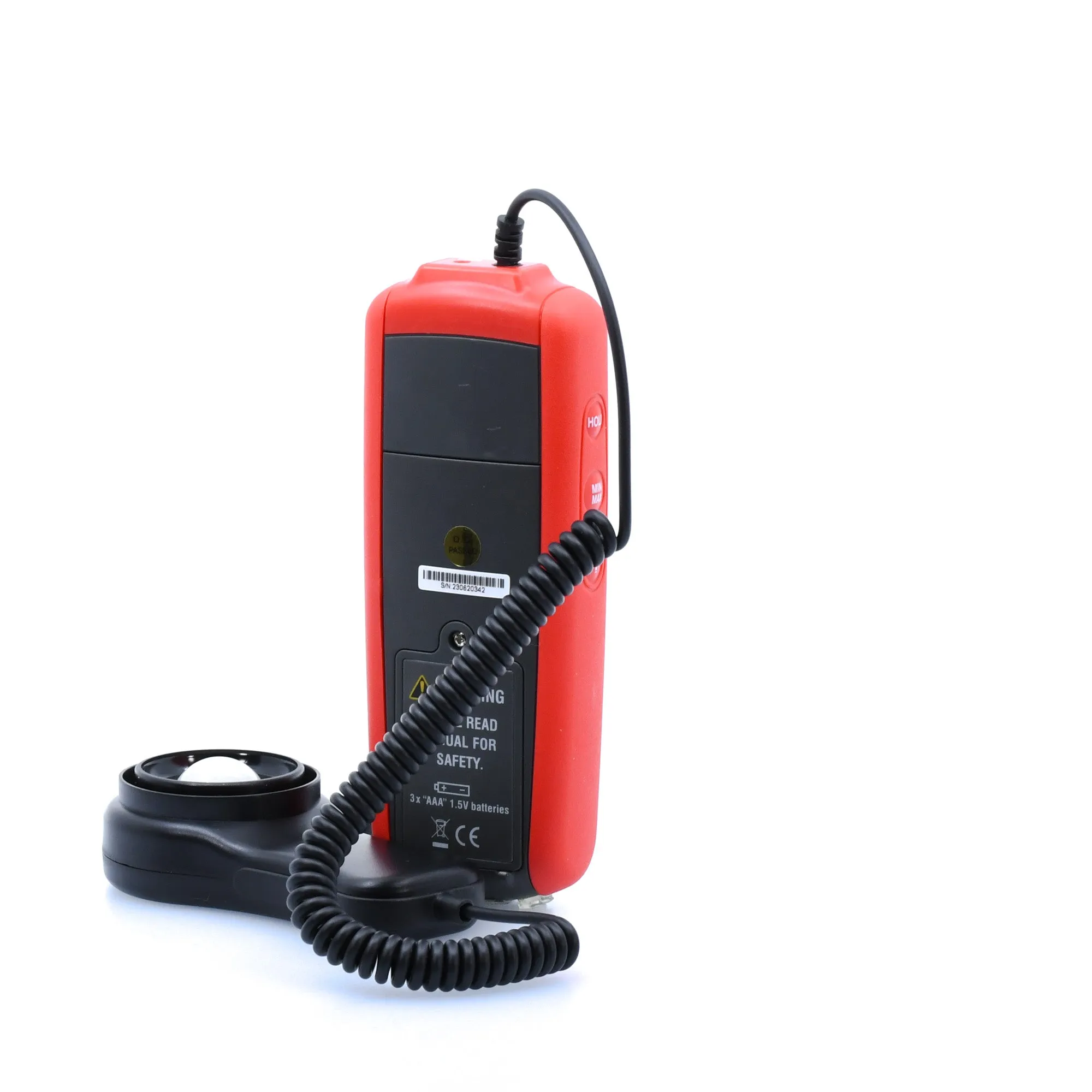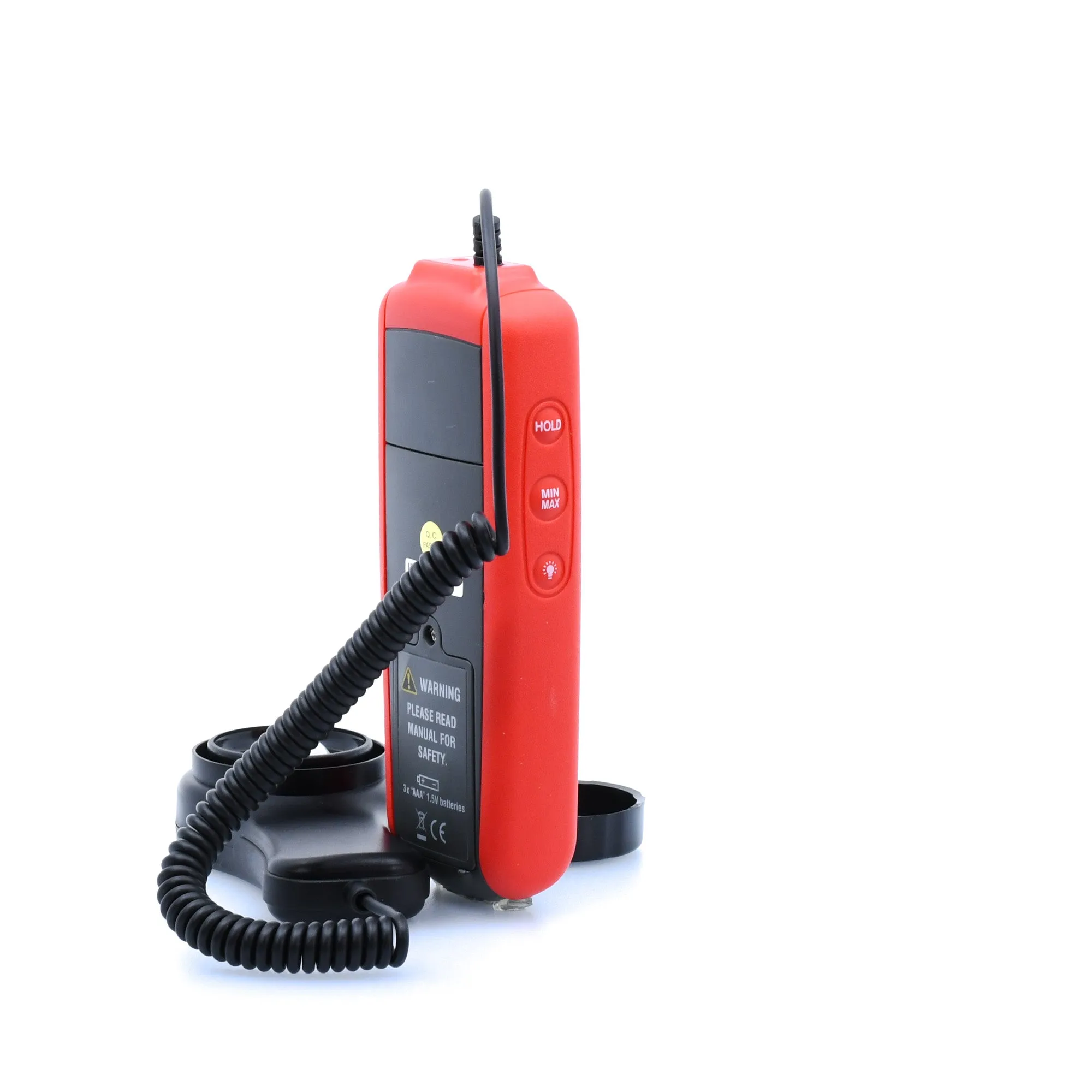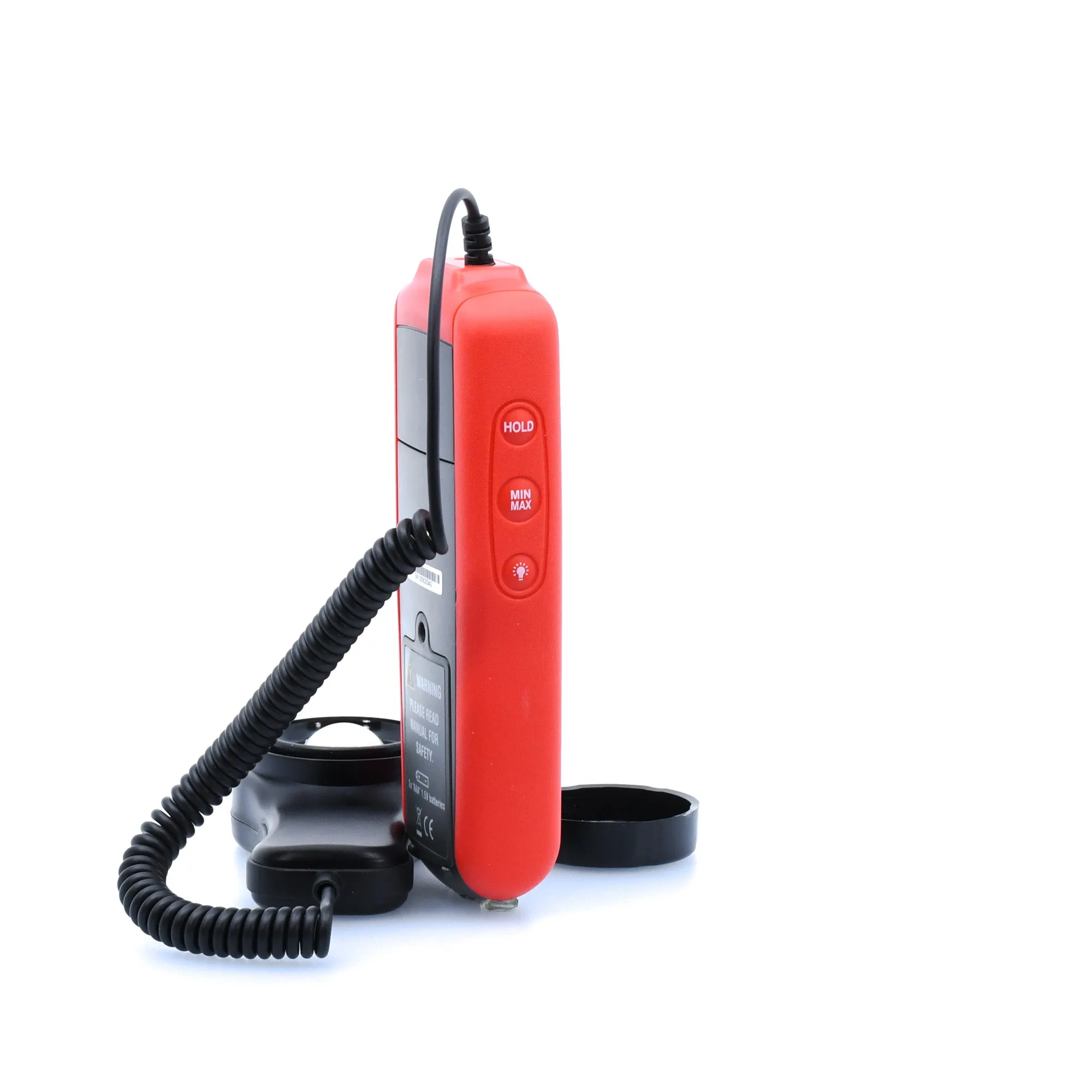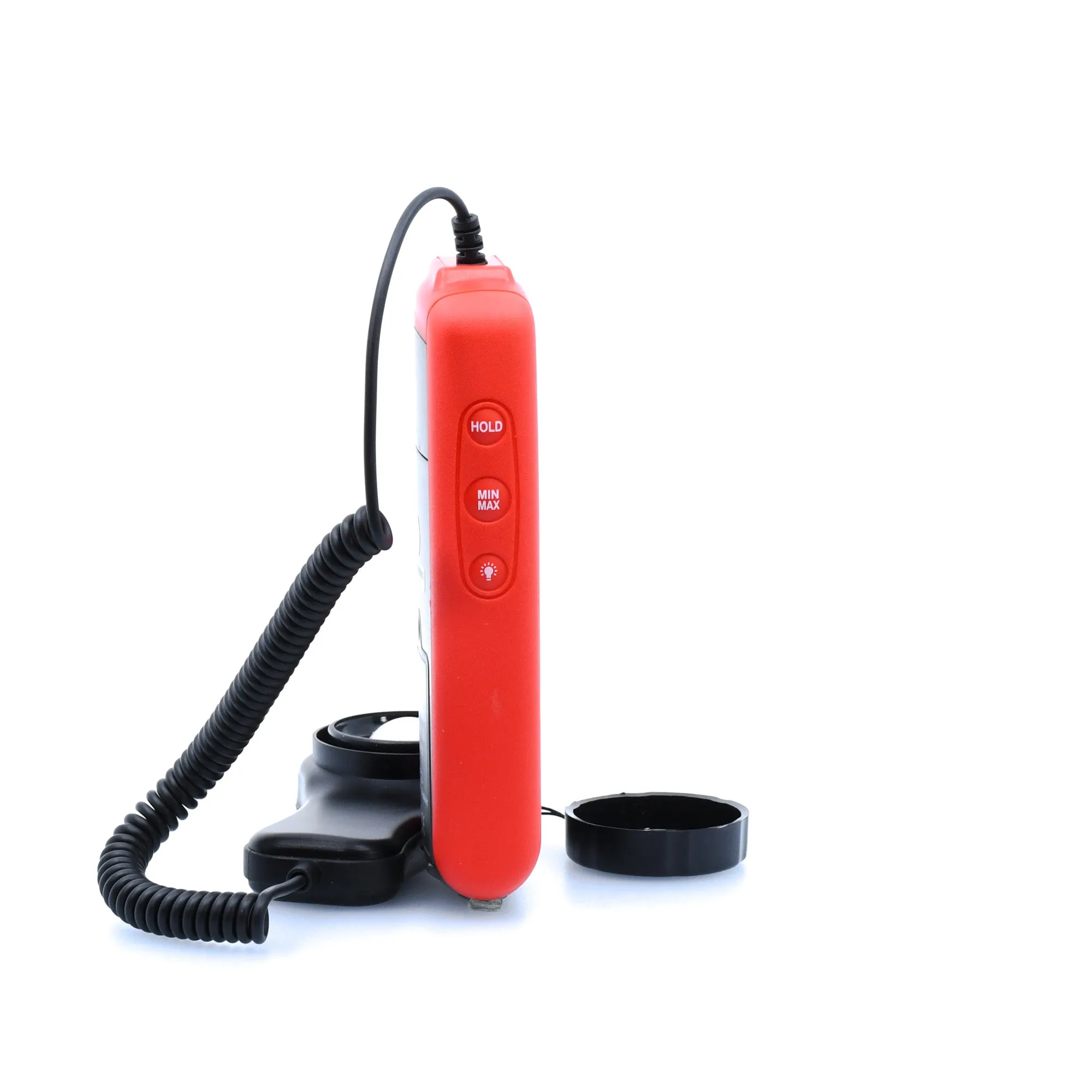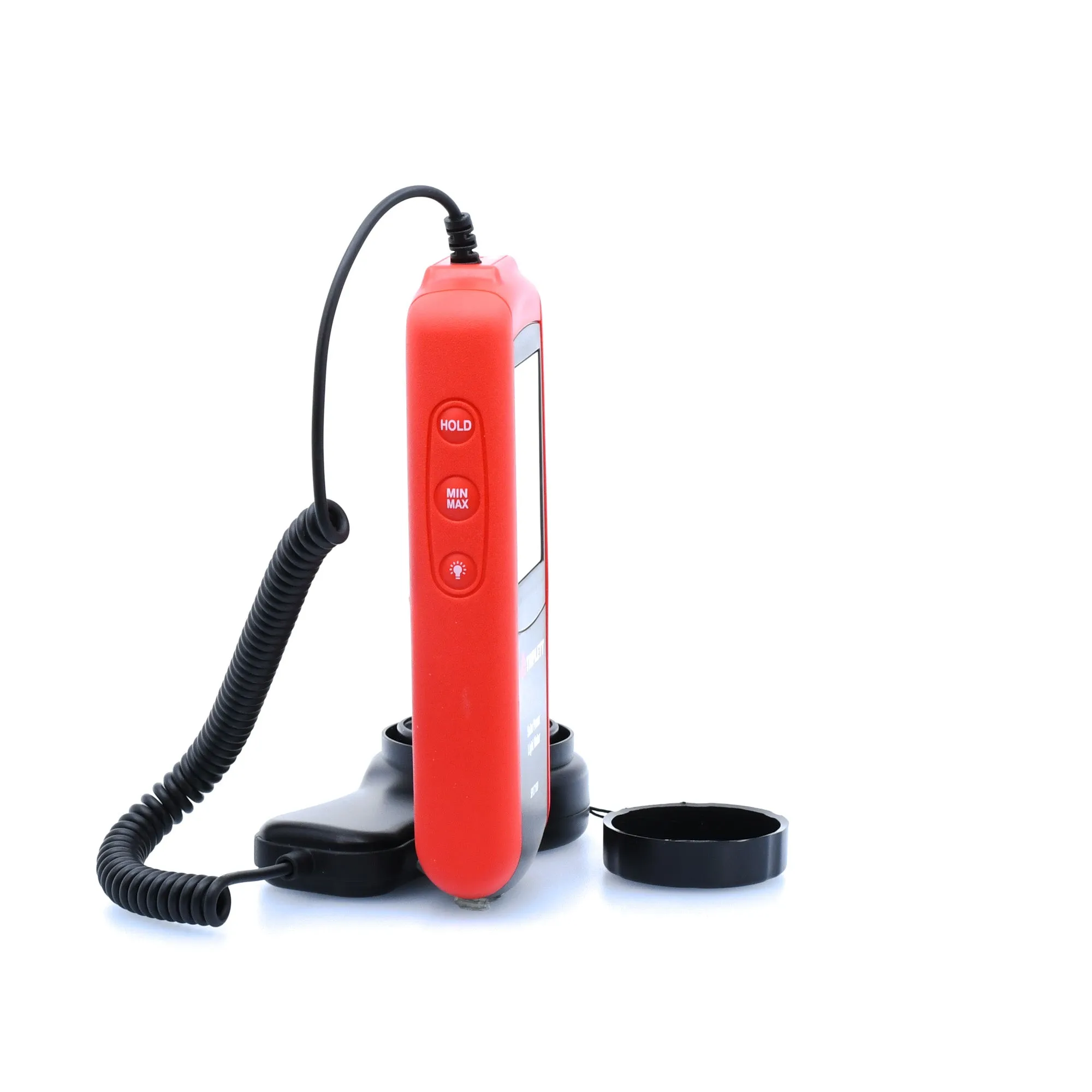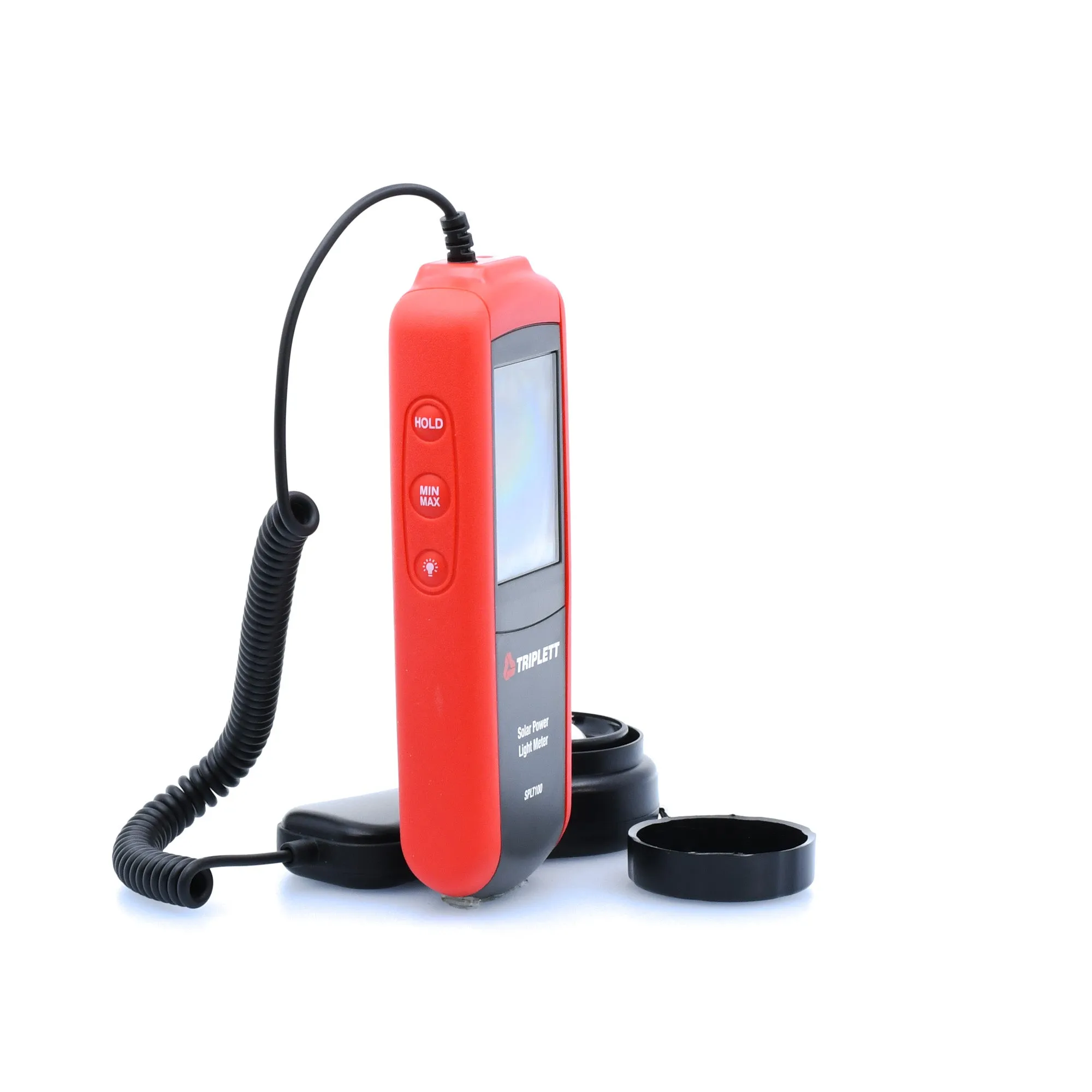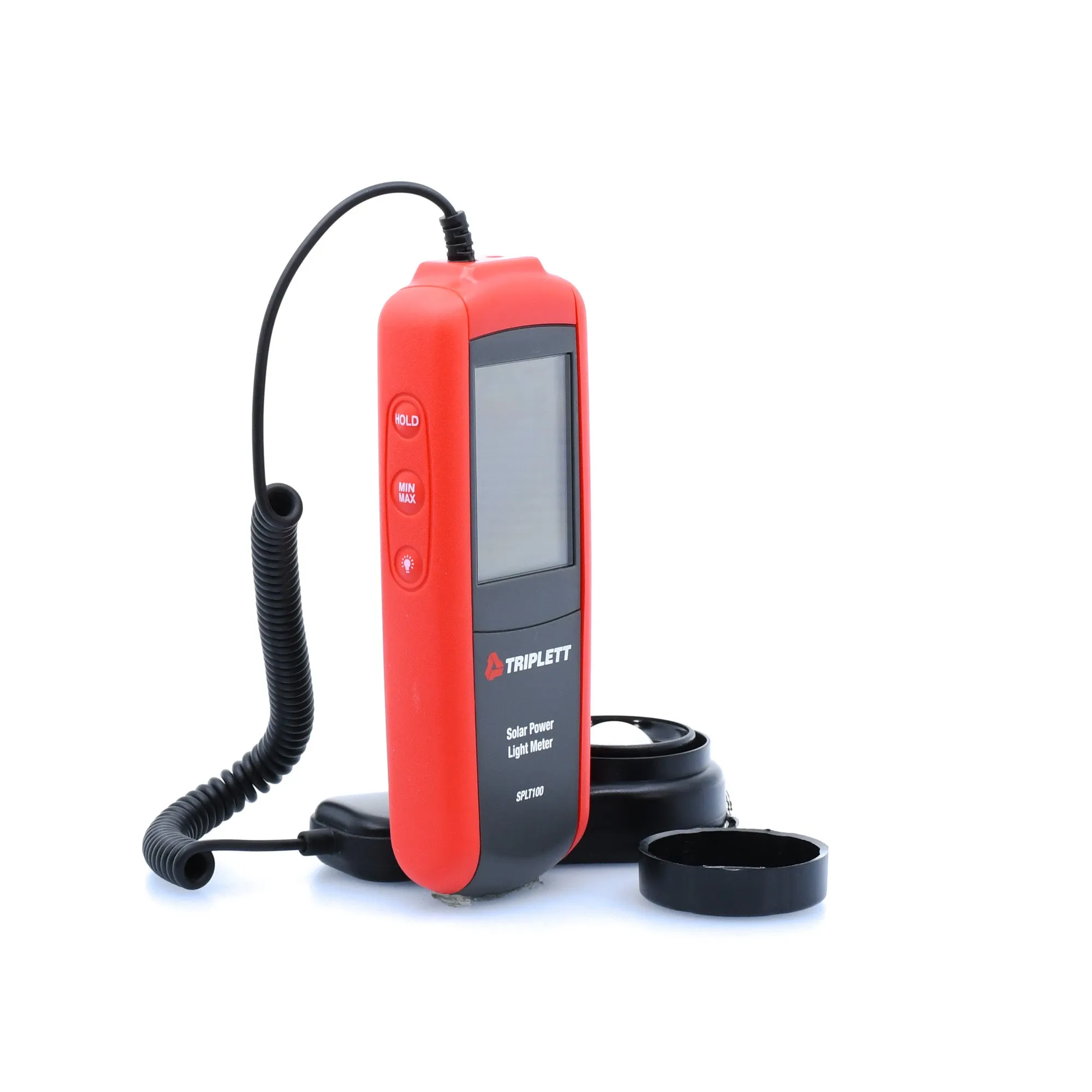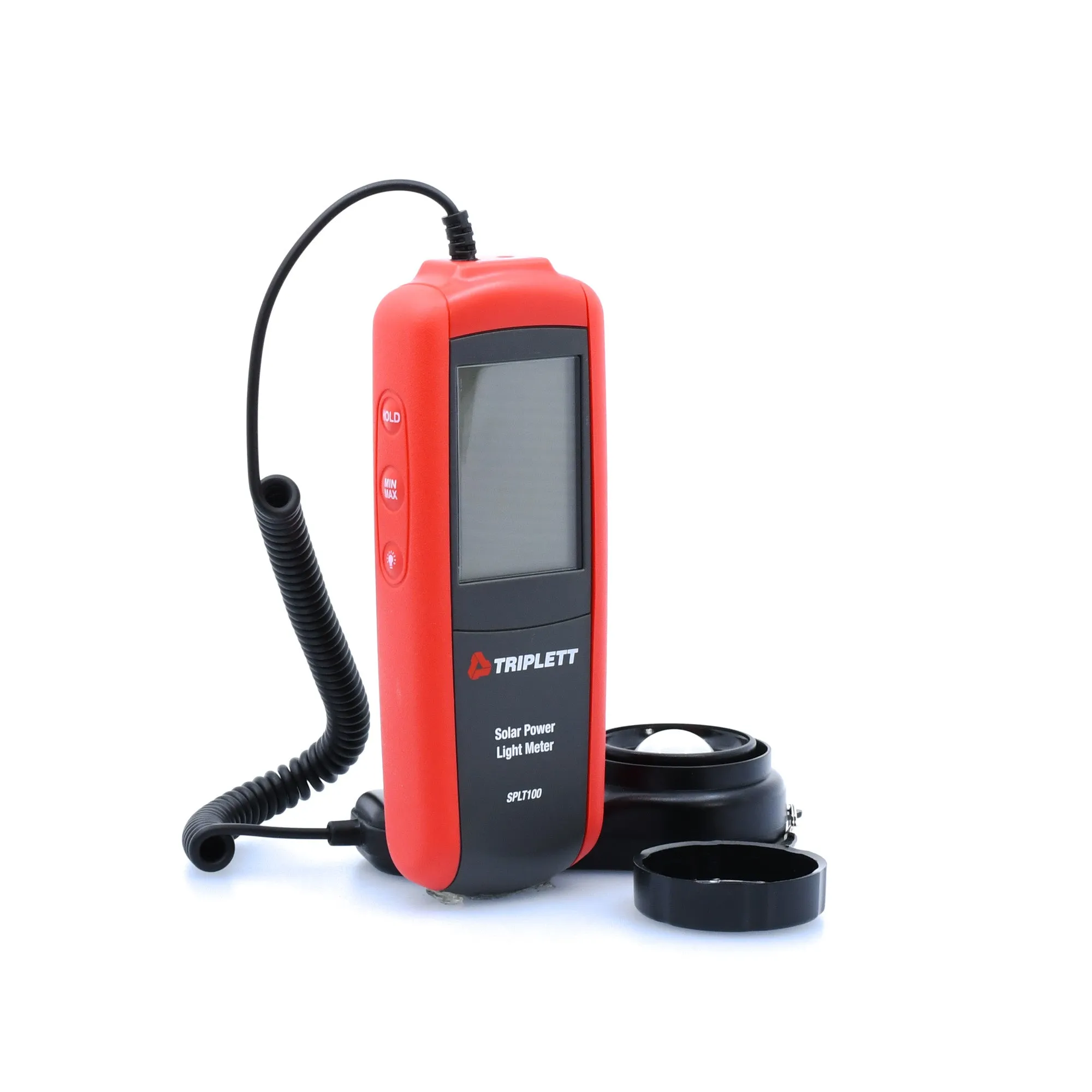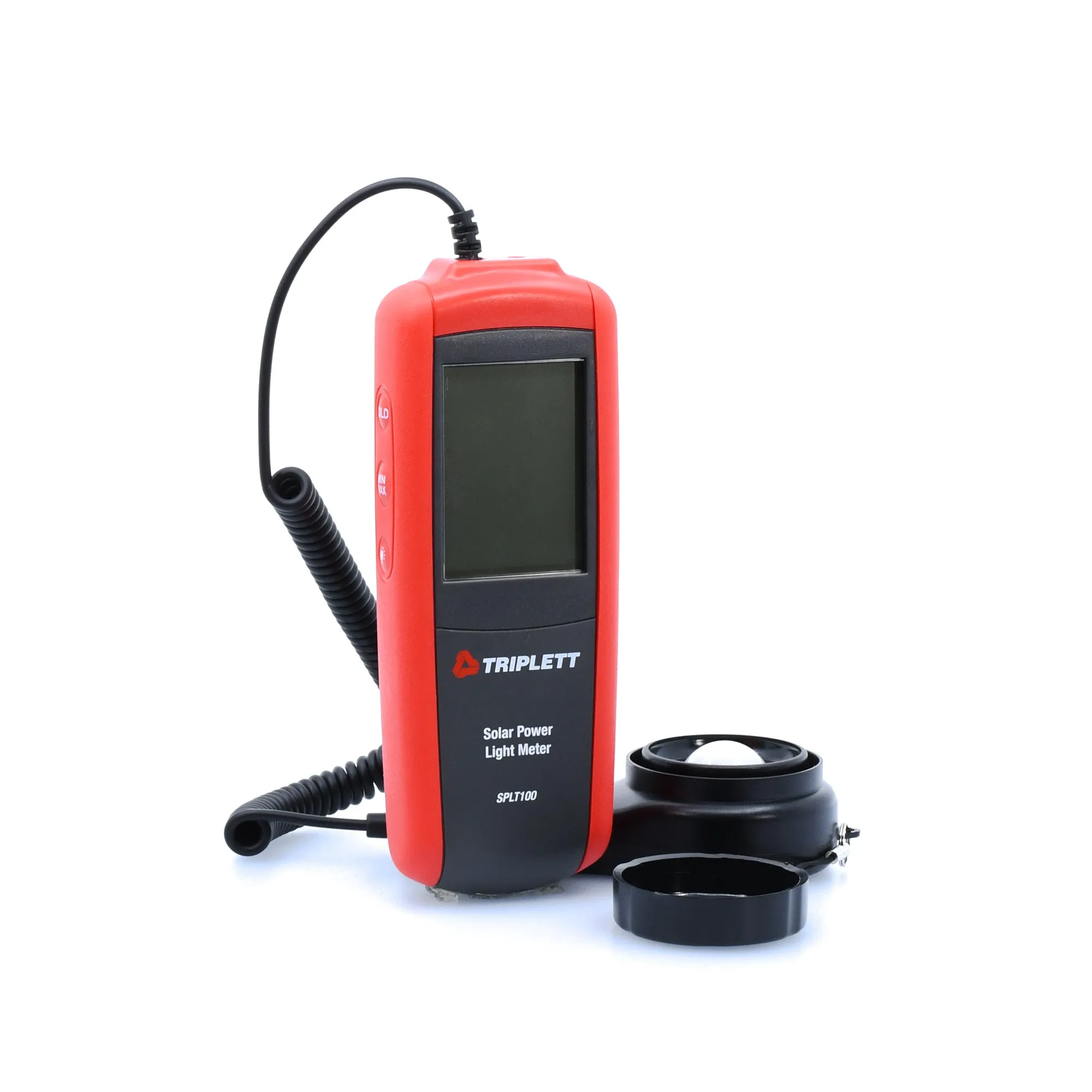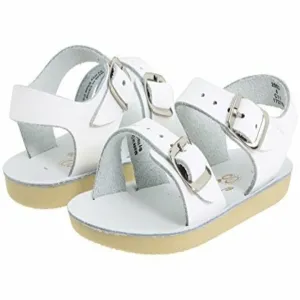The Triplett Model SPLT100 Solar Power Light Meter is an essential tool designed for measuring solar power levels to ensure maximum efficiency in your solar panel installation.
DESCRIPTION
The Triplett Model SPLT100 Solar Power Light Meter is an essential tool designed for measuring solar power levels to ensure maximum efficiency in your solar panel installation. This versatile device also finds use in various applications like agriculture, meteorology, optical and physics laboratories, and high-performance window manufacturing for the automotive and building industries. With its capability to read in either W/m2 or BTU/(ft2*h), the SPLT100 offers flexible measurement options. Its swift 0.25-second response time and cosine corrected silicon photodiode sensor offer accurate and reliable results. The meter has an auto/manual range selection, Min/Max function to record the highest and lowest readings over time, and a Data Hold feature to freeze the display for easy viewing. It also features a low battery indicator to alert you when it's time for a battery replacement.The package includes a sensor with a 13.4" (34cm) integrated cable, (3) AAA batteries, and a carrying case. The product comes with a 1-year warranty.
CATEGORY:
Features
- Measures light intensity from white LED light sources up to 40k Foot candles (400k Lux) Measures light from fluorescent, metal halide, high-pressure sodium, and incandescent sources
- 4000-count LCD display Silicon photodiode sensor and filter
- Min/Max/Avg function recalls highest, lowest, and average reading
- Data Hold freezes readings on the display
- Auto power off with disable
Specifications
| LT80 | |
| Display | 4 Digit LCD Display |
| Foot Candle Range | 0 to 40,000 Fc |
| Lux Range | 0 to 400,000 Lux |
| Resolution | 0.01 Fc/0.1 Lux |
| Accuracy | White LEDs: ±3% reading ±30d (0 to 50Fc/0 to 500 Lux) ±3% reading(>50FC/500 Lux) Other Light Sources: For reference only |
| Sensor | Silicon light diode and spectral response filter |
| Power | (2) AAA batteries |
| Dimensions (Meter) | 5.3 x 1.9 x 0.2" (133 x 48 x 23mm) |
| Weight | 8.8oz (250g) |
Downloads
MORE INFO
Brighten up the Workplace!
While incandescent bulbs contain filaments that heat up and burn out, LEDs save you money and energy while staying cool to the touch. This is one safety benefit of LED lights–since they stay cool, they pose less of a fire and burn hazard than heat-generating lights like incandescent. This is why you see so many switching over from incandescent to LED light bulbs or booking retrofits in buildings and homes.
This being said, you still need to be able to measure LED lights accurately in order to make sure the proper, and in some cases, the required amount of light is being met in an area. If the proper light is NOT met this could lead to unsafe conditions such as accidents on the job due to not being able to see well. Potential security issues arise in dimly lit parking lots and ATM areas. The Triplett LT80 uses a sensor that is specifically designed for the newer LED lighting. We all need to see well to do our jobs so the importance of knowing that you have the proper light levels helps us keep safe.
The Triplett Model LT80 LED Light Meter measures light intensity and verifies OSHA safety requirements from white LED light sources up to 40k Foot candles (400k Lux) now being incorporated in factories, parking lots, schools, offices, transportation lines, warehouses, hospitals, schools, and many other environments. It also measures light from fluorescent, metal halide, high-pressure sodium, and incandescent sources. It features a 4000 count LCD display, silicon photodiode sensor with spectral response filter, Min/Max/Avg function that recalls the highest, lowest, and average reading, Data Hold to freeze the reading on the display for easy viewing, and auto power off (with disable) to conserve battery life. Includes 2 AAA batteries and a pouch case.
FAQs
-
Q: What is an LED Light Meter?
A: An LED Light Meter, also known as a lux meter or illuminance meter, is a device designed to measure the intensity of light, particularly in the visible spectrum. It quantifies the amount of light falling on a specific surface area, which is crucial for evaluating the brightness of LED lights and other light sources.
-
Q: How does an LED Lux Meter work?
A: LED Lux Meters typically consist of a photodiode or photovoltaic sensor that converts incident light into an electrical signal. The sensor's response to different wavelengths matches the sensitivity of the human eye. The lux meter then displays the illuminance value in lux (lumens per square meter) on its screen.
-
Q: What is the difference between an LED Light Meter and an LED Lux Meter?
A: The terms "LED Light Meter" and "LED Lux Meter" are often used interchangeably, but they refer to the same device. Both are designed to measure the brightness of LED lights and other light sources in lux units.
-
Q: What is an LED Inspection Light Meter?
A: An LED Inspection Light Meter is a specialized type of LED Lux Meter used to measure the light output of inspection lamps, torches, and other handheld light sources. It is especially helpful in quality control and maintenance inspections, ensuring the performance of these critical tools.
-
Q: Can an LED Light Meter measure other light sources besides LEDs?
A: Yes, LED Light Meters can measure the illuminance of various light sources, including incandescent bulbs, fluorescent lights, and natural daylight. They provide valuable insights into the performance and efficiency of different lighting setups.
-
Q: Are LED Light Meters and LED Lux Meters portable?
A: Yes, most LED Light Meters and LED Lux Meters are compact and portable, making them suitable for field measurements and inspections.
-
Q: Do I need calibration for my LED Light Meter?
A: Regular calibration of LED Light Meters is essential to ensure accurate readings. Many manufacturers provide calibration services or recommend calibration intervals to maintain measurement accuracy.
-
Q: Can I use an LED Lux Meter for safety compliance in workplaces?
A: Yes, LED Lux Meters are instrumental in assessing lighting levels to ensure compliance with workplace safety standards and creating comfortable working environments for employees. They help prevent eye strain and promote productivity.
-
Q: How to measure LED light output?
A: Measuring LED light output, also known as luminous flux, is essential to determine the brightness of an LED light source. To measure the light output of an LED, you need an LED Light Meter (also called a lux meter or illuminance meter).
-
Q: What are OSHA foot candle requirements?
A: The Occupational Safety and Health Administration (OSHA) does not have specific foot-candle requirements in its regulations. However, OSHA does provide general guidelines and recommendations for adequate lighting in workplaces to ensure the safety and health of employees. Employers should assess their workplace lighting needs and ensure that the lighting levels meet the requirements for the safety and well-being of their employees.

 Cart(
Cart(